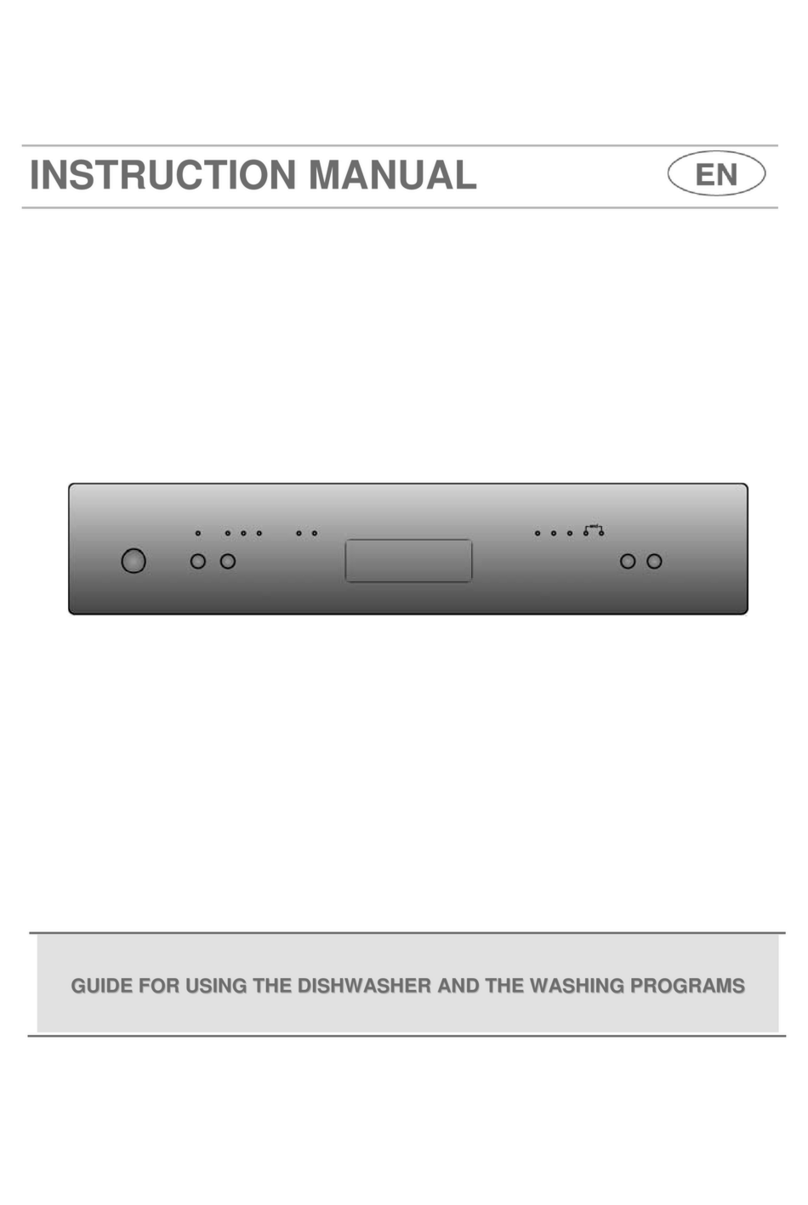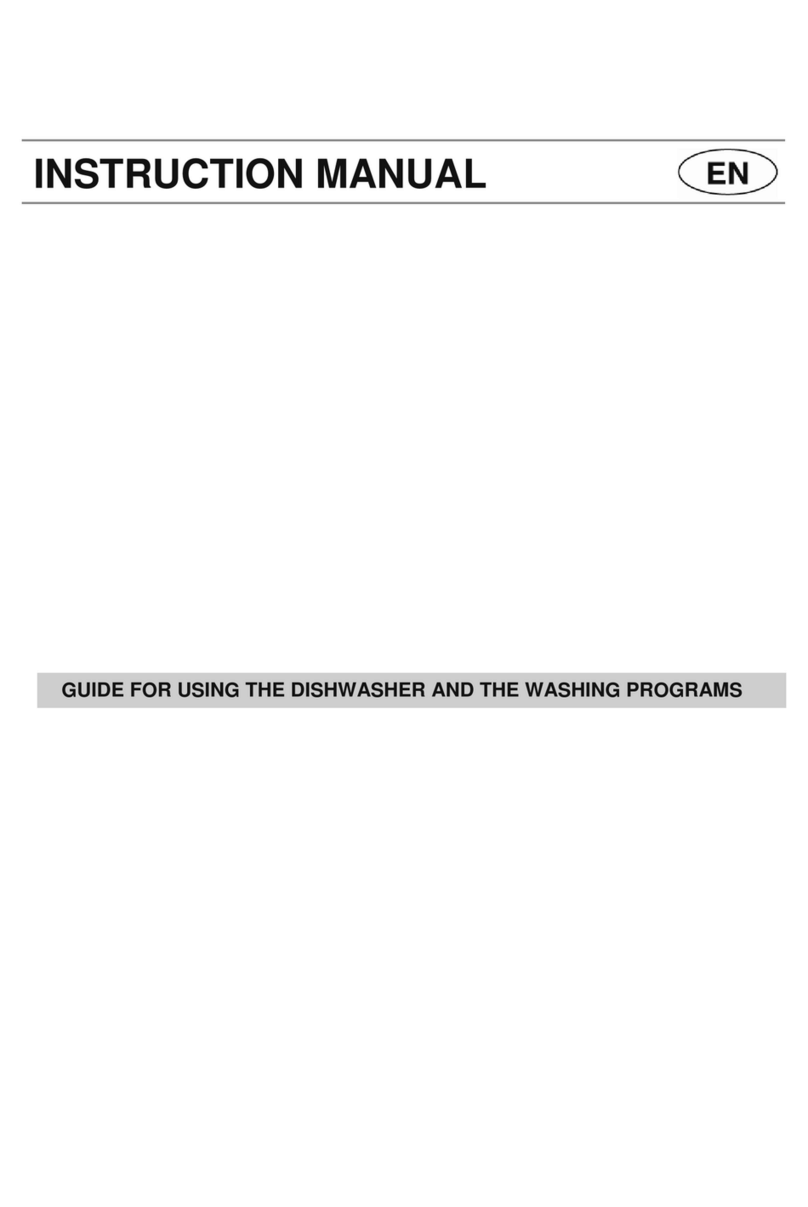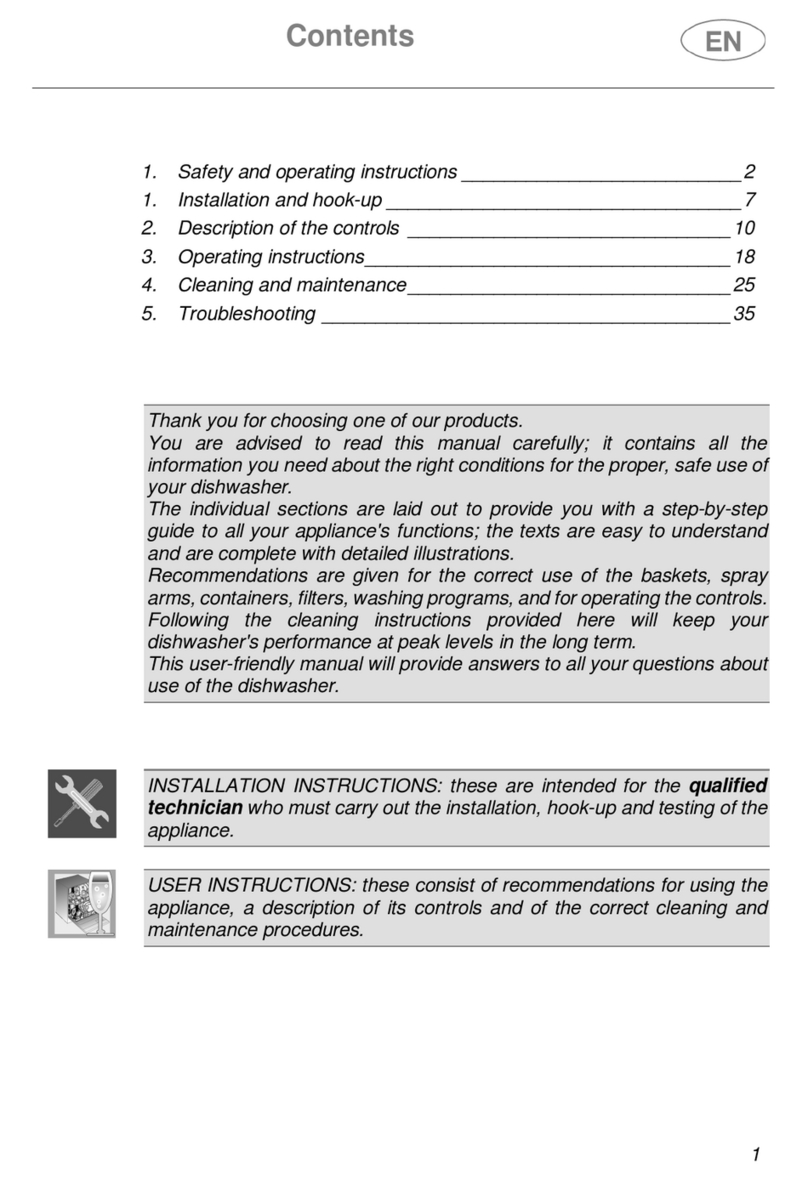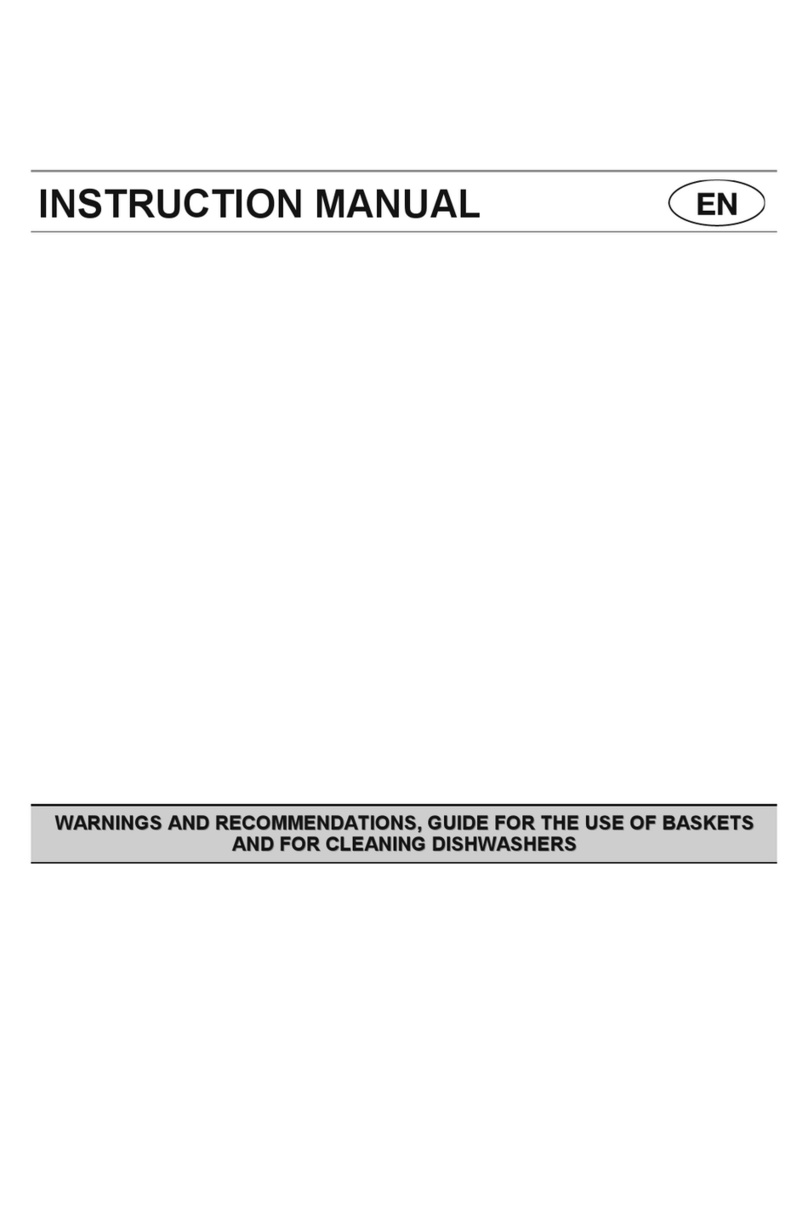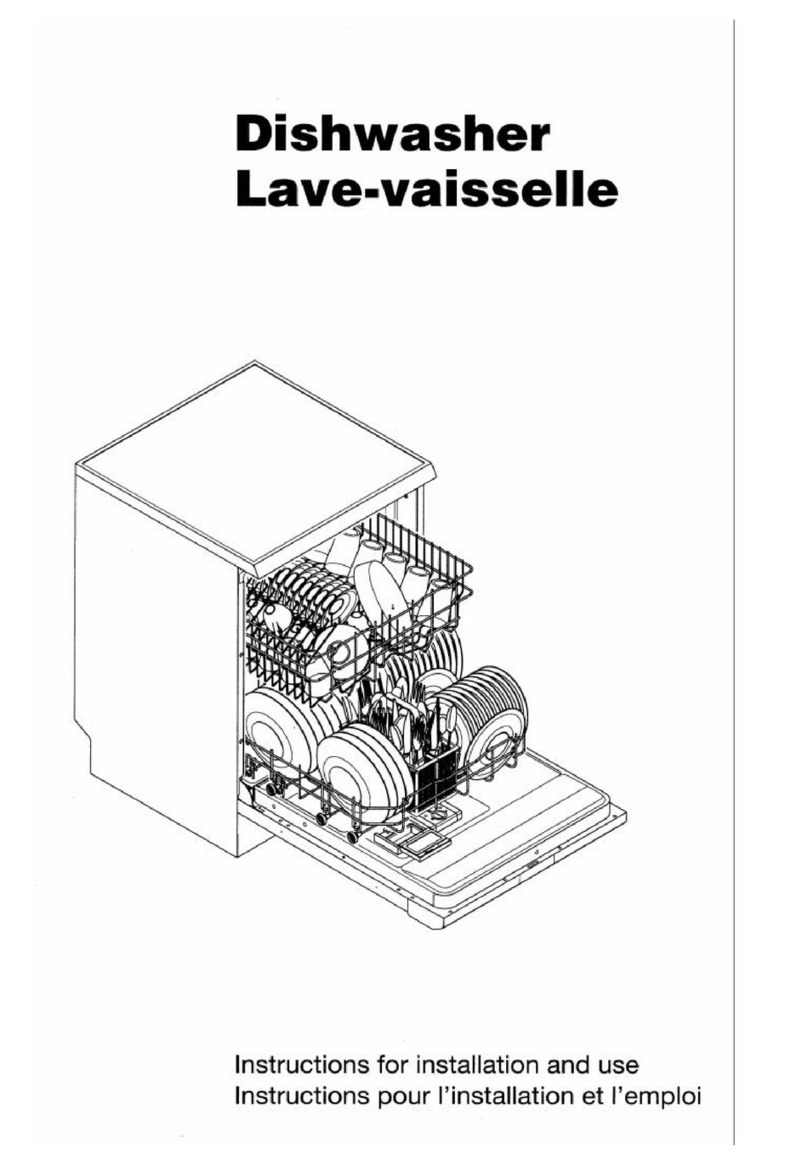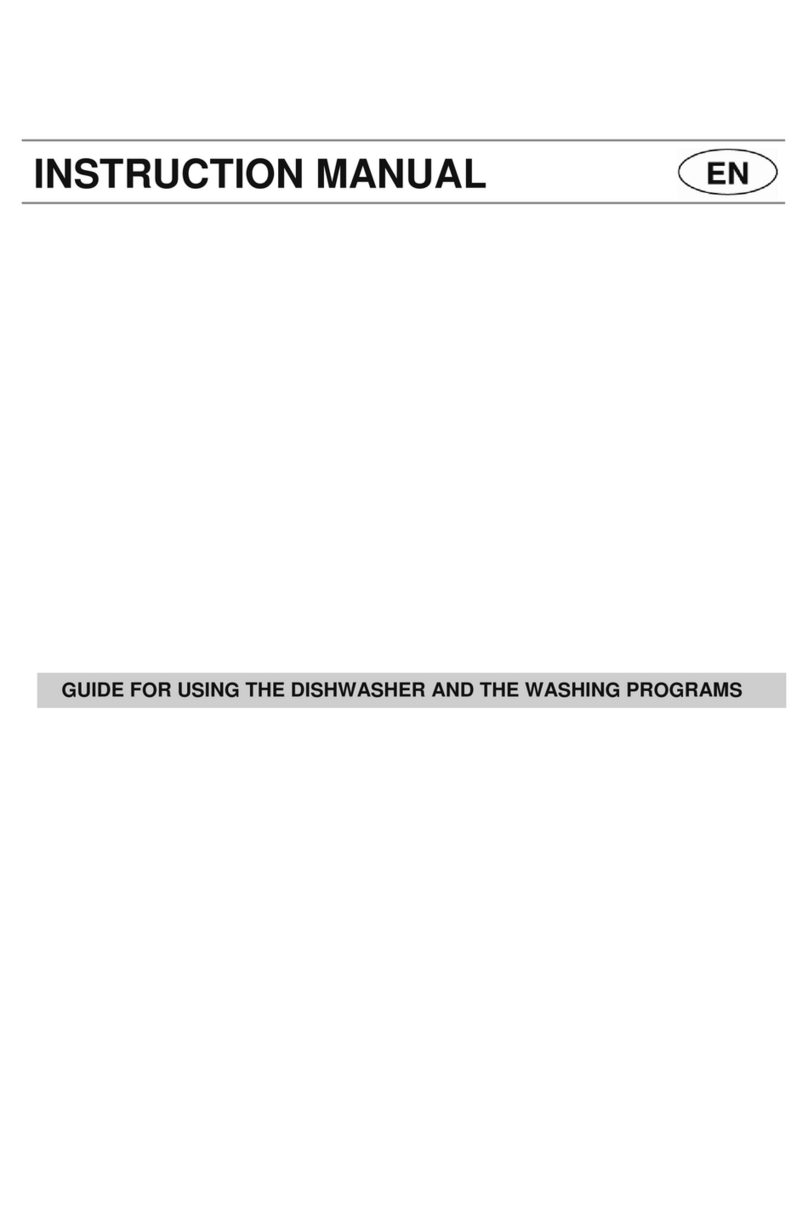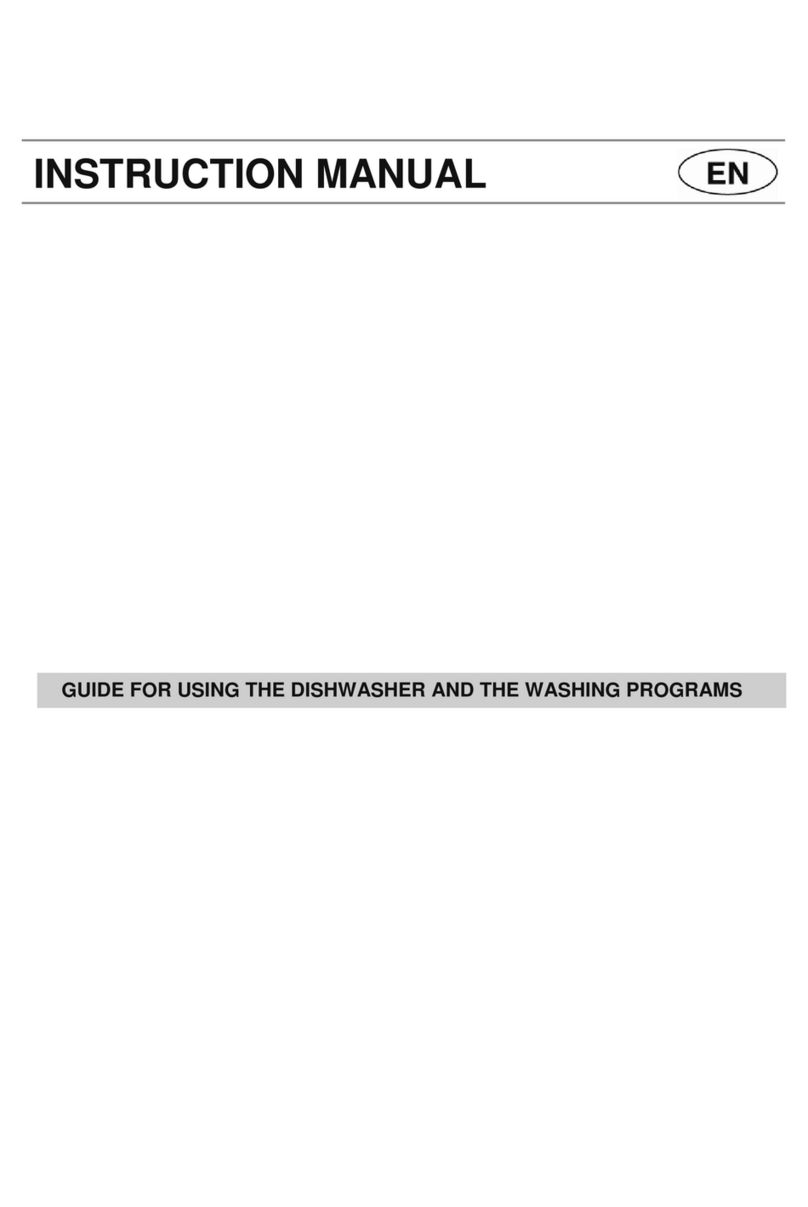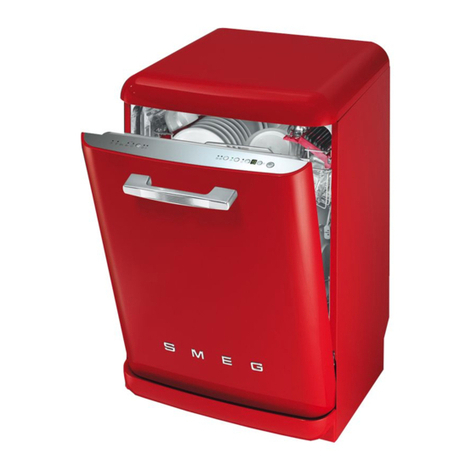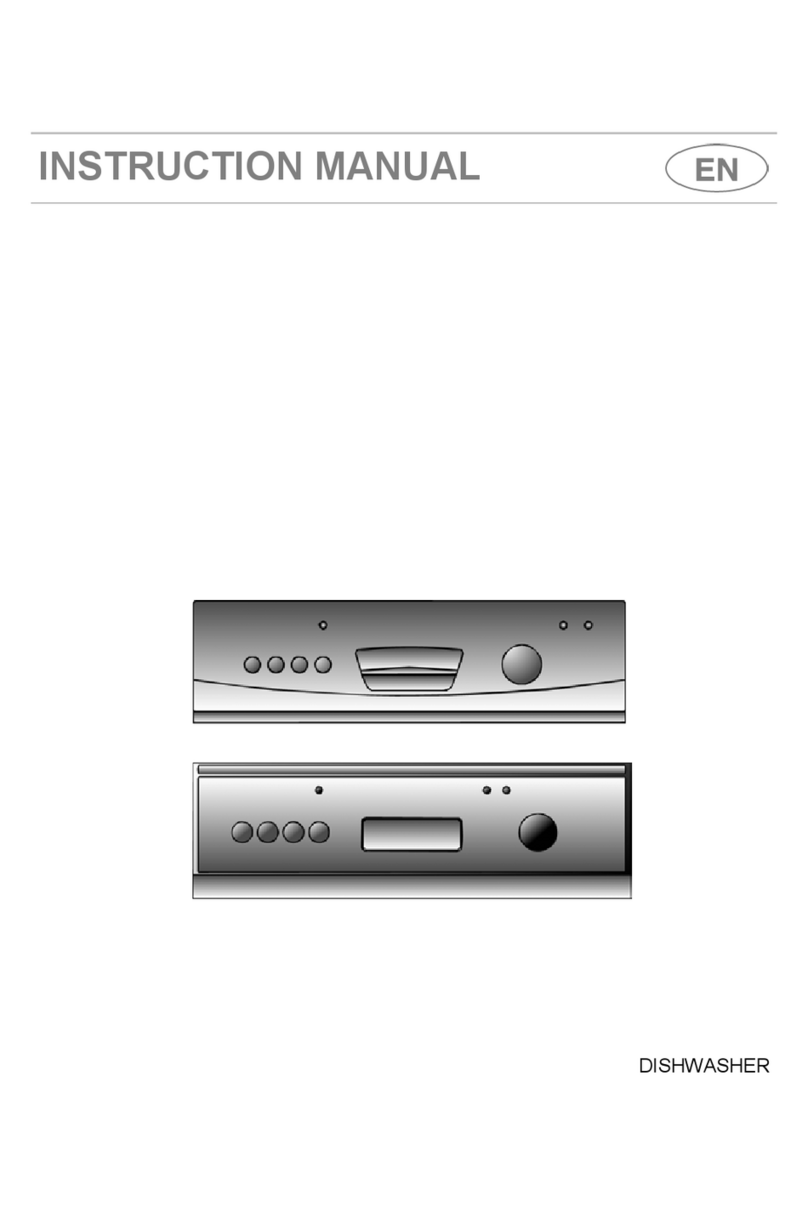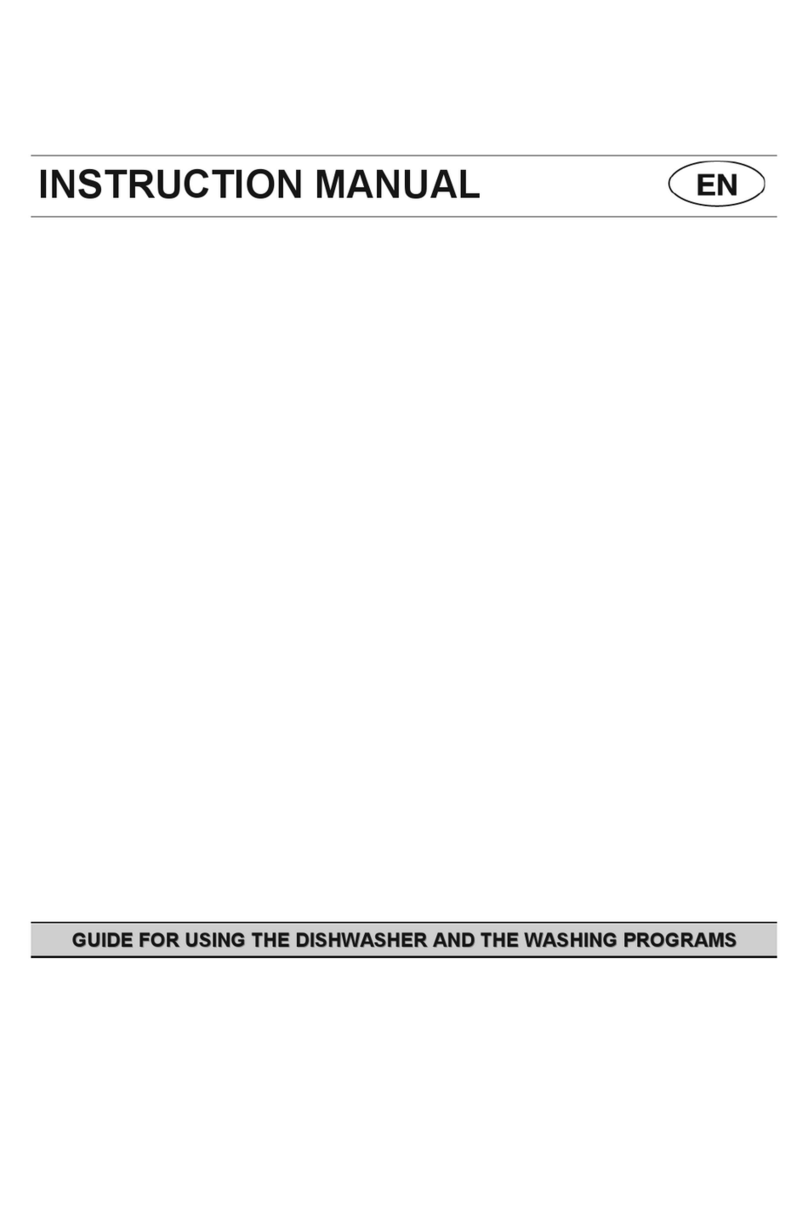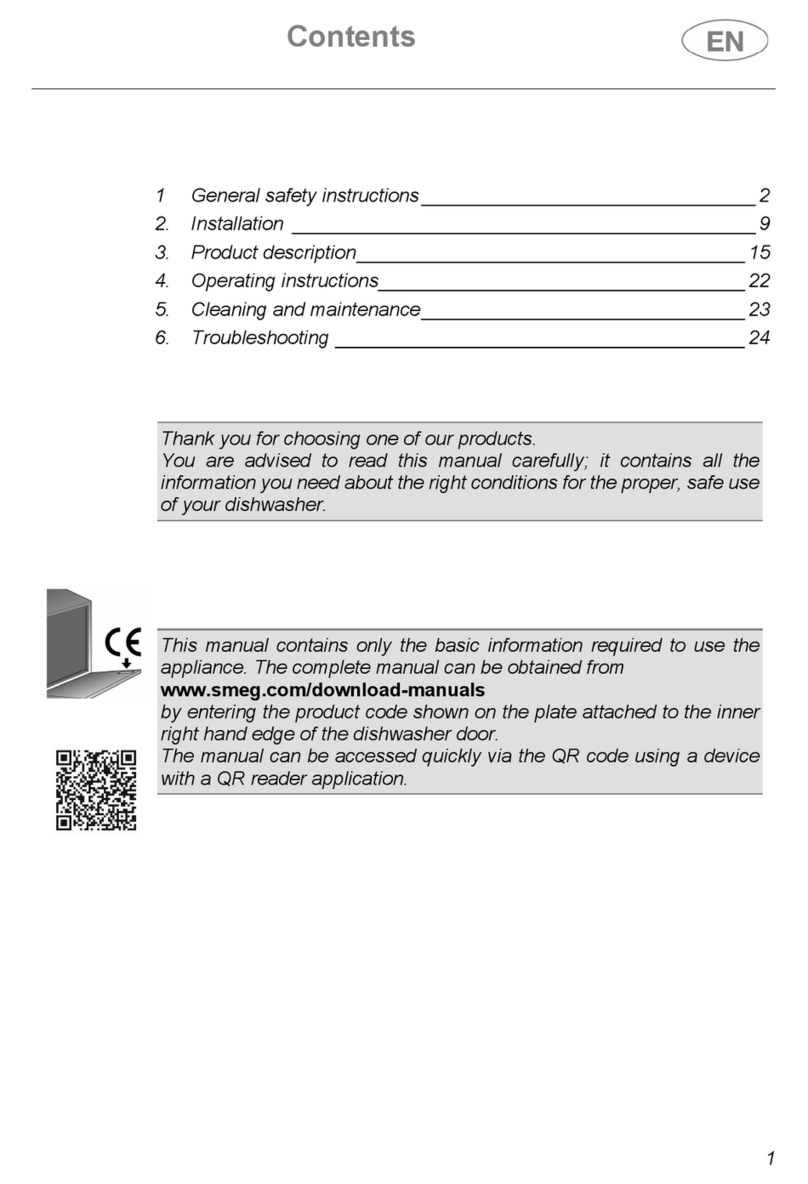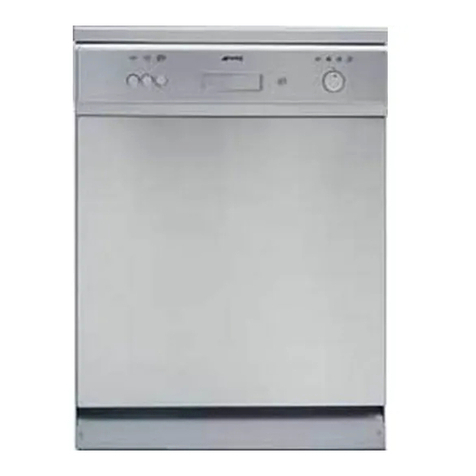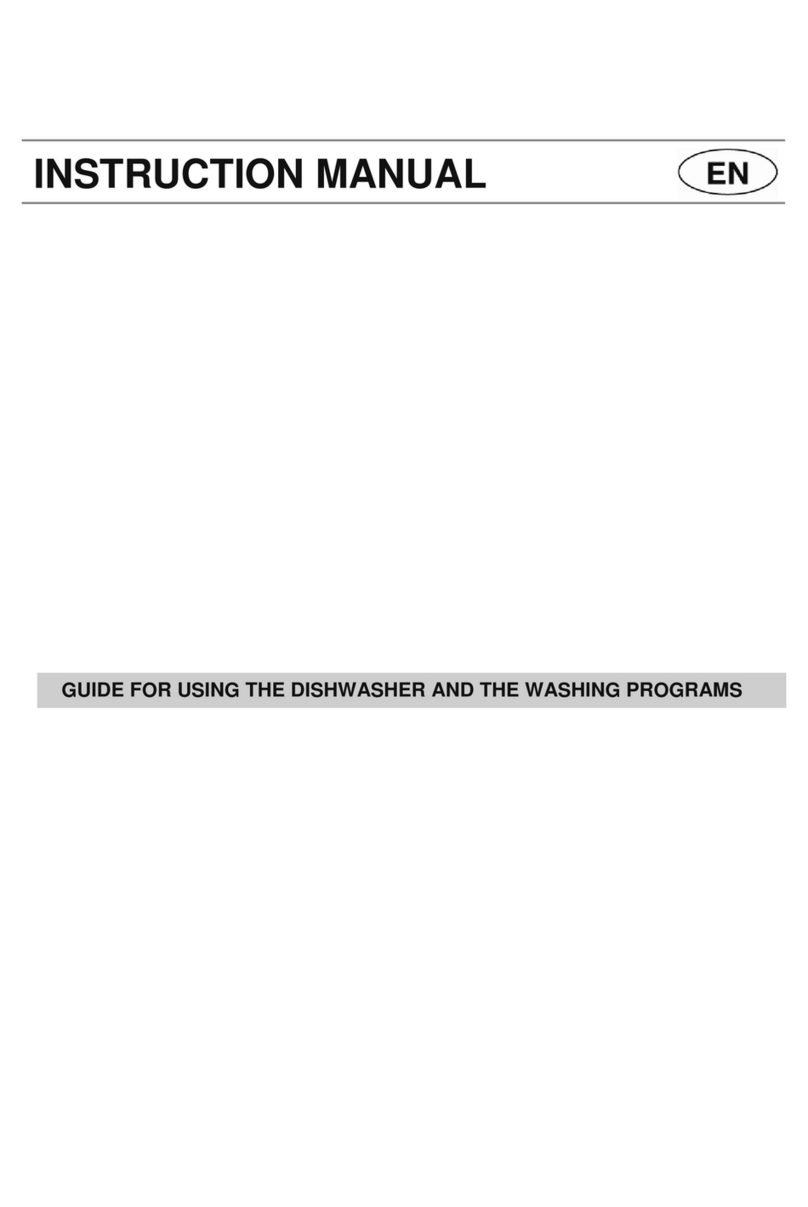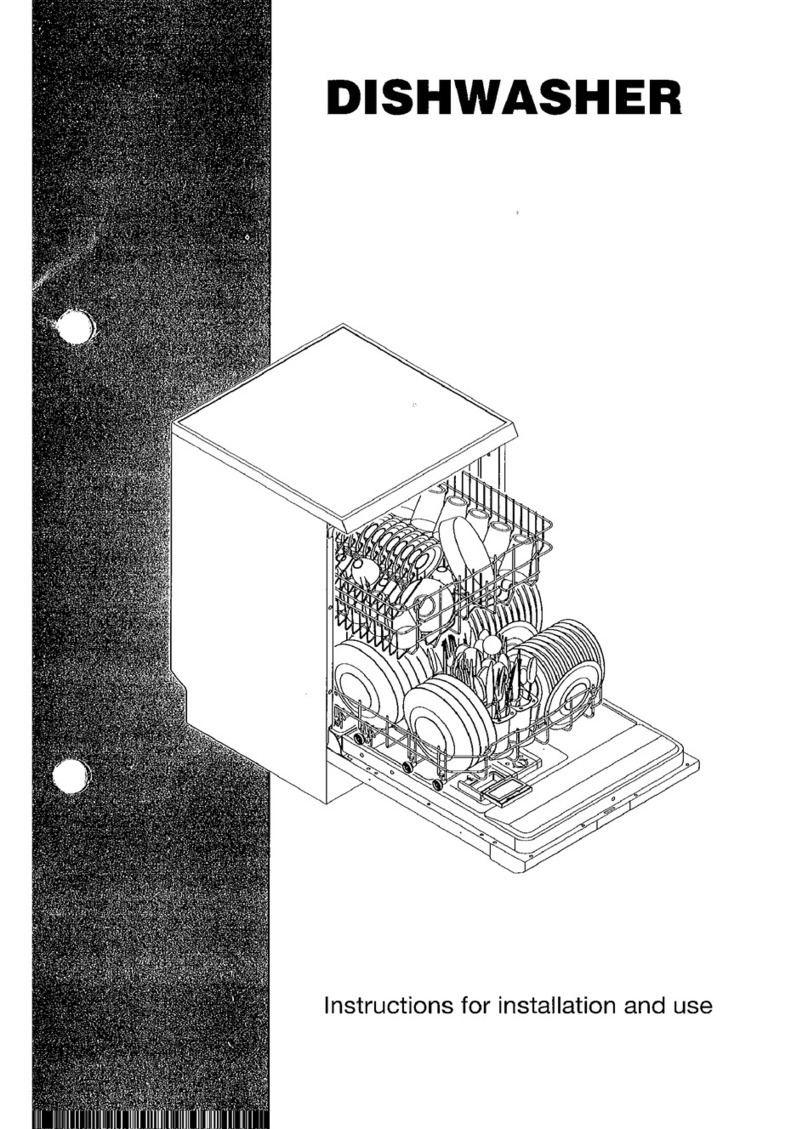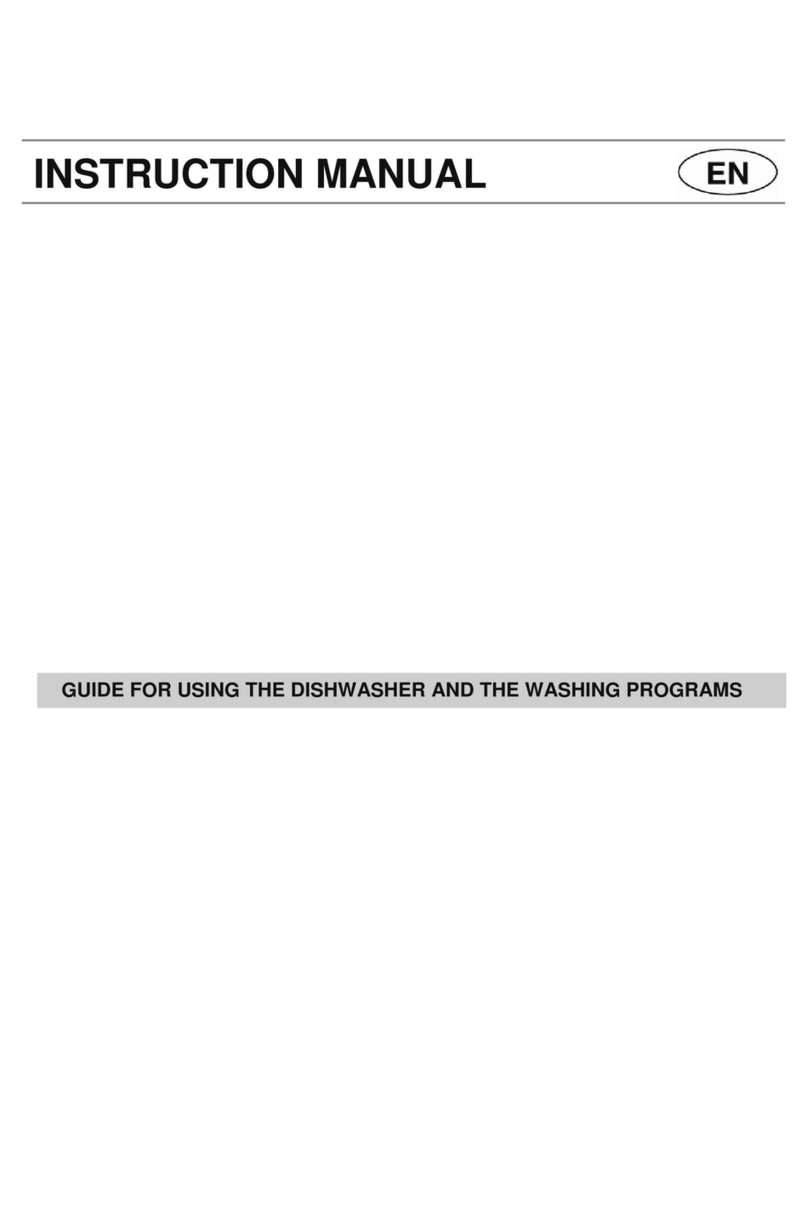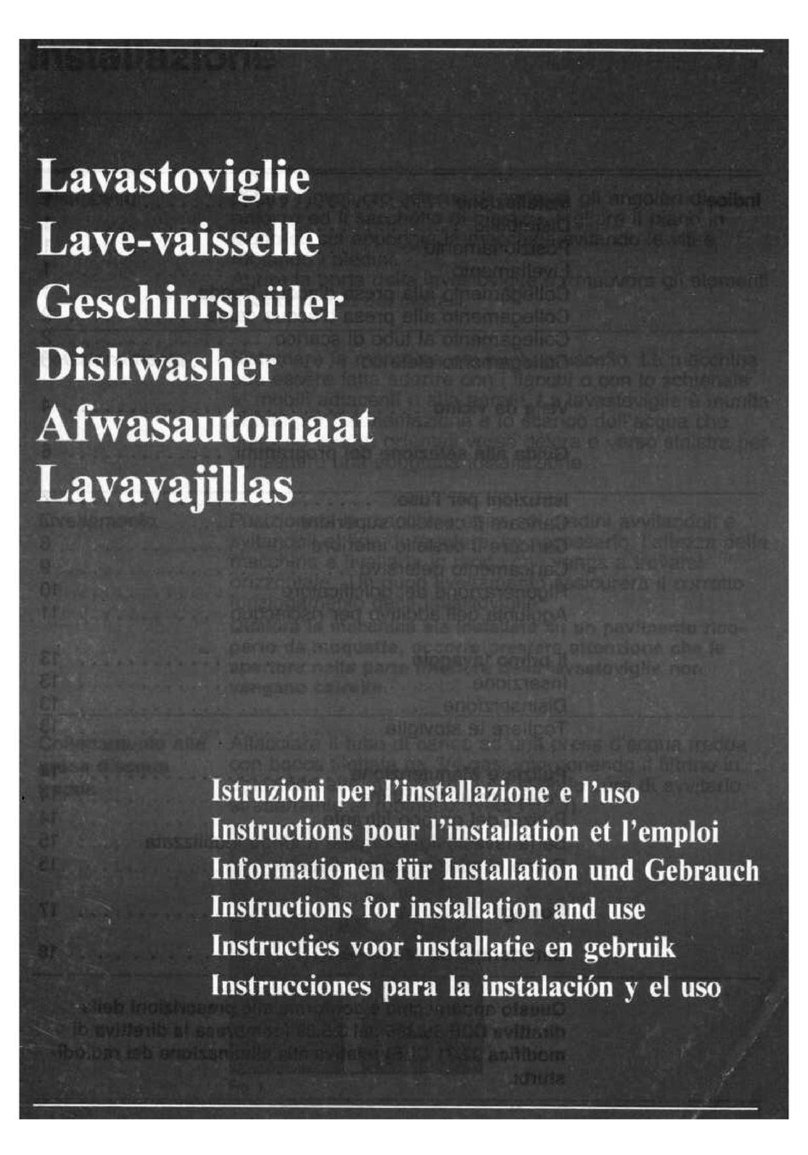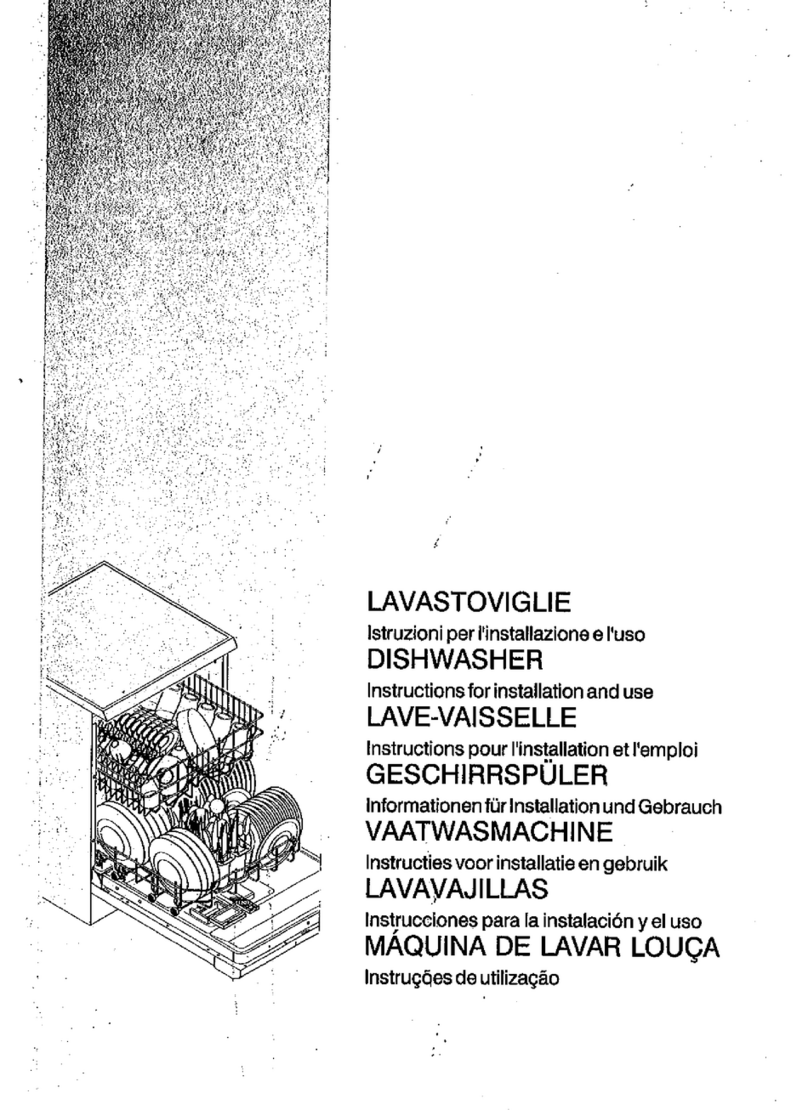Safety instructions
5
THIS APPLIANCE IS MARKED ACCORDING TO THE EUROPEAN DIRECTIVE
2002/96/EC ON WASTE ELECTRICAL AND ELECTRONIC EQUIPMENT
(WEEE). BY ENSURING THIS PRODUCT IS DISPOSED OF CORRECTLY,
YOU WILL HELP PREVENT POTENTIAL NEGATIVE CONSEQUENCES FOR
THE ENVIRONMENT AND HUMAN HEALTH, WHICH COULD OTHERWISE BE
CAUSED BY INAPPROPRIATE WASTE HANDLING OF THIS PRODUCT.
THE SYMBOL ON THE PRODUCT, OR ON THE DOCUMENTS
ACCOMPANYING THE PRODUCT, INDICATES THAT THIS APPLIANCE MAY
NOT BE TREATED AS HOUSEHOLD WASTE. INSTEAD IT SHALL BE
HANDED OVER TO THE APPLICABLE COLLECTION POINT FOR THE
RECYCLING OF ELECTRICAL AND ELECTRONIC EQUIPMENT.
DISPOSAL MUST BE CARRIED OUT IN ACCORDANCE WITH LOCAL
ENVIRONMENTAL REGULATIONS FOR WASTE DISPOSAL. FOR MORE
DETAILED INFORMATION ABOUT TREATMENT, RECOVERY AND
RECYCLING OF THIS PRODUCT, PLEASE CONTACT YOUR LOCAL CITY
OFFICE, YOUR HOUSEHOLD WASTE DISPOSAL SERVICE OR THE SHOP
WHERE YOU PURCHASED THE PRODUCT.
IN THE EVENT OF A FAULT, DISCONNECT THE DISHWASHER FROM THE
ELECTRICAL POWER SUPPLY AND SHUT OFF THE WATER TAP.
DO NOT USE APPLIANCES WHICH HAVE BEEN DAMAGED DURING
TRANSIT! IF IN DOUBT, CONSULT YOUR DEALER.
THE APPLIANCE MUST BE INSTALLED AND CONNECTED IN ACCORDANCE
WITH THE INSTRUCTIONS PROVIDED BY THE MANUFACTURER OR BY A
QUALIFIED TECHNICIAN.
THE APPLIANCE IS INTENDED FOR USE BY ADULTS. DO NOT ALLOW
CHILDREN TO COME NEAR OR PLAY WITH THE DISHWASHER. KEEP
CHILDREN AWAY FROM DETERGENTS AND FROM THE OPEN
DISHWASHER DOOR. THE PACKAGING MATERIALS (PLASTIC BAGS,
POLYSTYRENE, METAL BARS, ETC.) MUST NOT BE LEFT WITHIN THE
REACH OF CHILDREN.
KEEP CHILDREN AWAY FROM THE OPEN DISHWASHER. THE APPLIANCE
MAY CONTAIN RESIDUES OF DETERGENT WHICH CAN CAUSE
IRREVERSIBLE DAMAGE TO THE EYES, MOUTH, AND THROAT, AS WELL
AS POSSIBLE DEATH BY SUFFOCATION.
DO NOT INTRODUCE SOLVENTS SUCH AS ALCOHOL OR TURPENTINE
WHICH MAY CAUSE AN EXPLOSION.
DO NOT LOAD DISHES THAT ARE SOILED WITH ASH, WAX OR PAINTS.
LEANING OR SITTING ON THE DISHWASHER DOOR WHEN OPEN MAY
CAUSE THE APPLIANCE TO OVERTURN, PUTING PEOPLE AT RISK.
NEVER LEAVE THE DISHWASHER DOOR OPEN; PEOPLE MIGHT TRIP
OVER IT.

